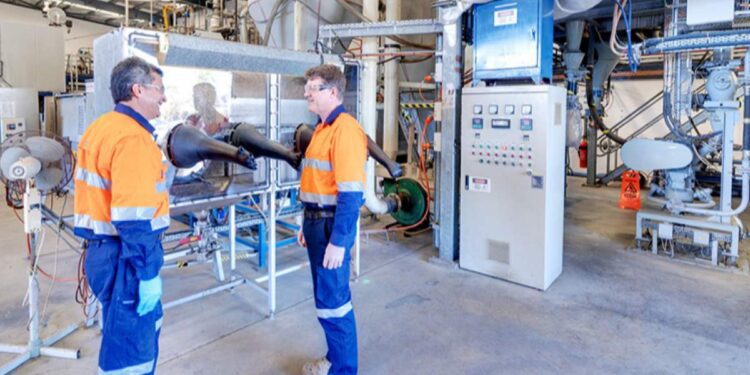Lithium Australia (ASX:LIT) subsidiary VSPC is progressing its plans to establish a strategic position in the market for cobalt- and nickel-free lithium-ion batteries (LIBs).
According to Lithium Australia it has noted that the proportion of cobalt-free batteries in the LIB market space continues to grow following the release by BYD and Tesla of all-electric vehicles powered by lithium iron phosphate (LFP) type LIBs in 2020.
BYD also began commercial production of its ‘Blade’ LFP-based batteries for electric vehicles (‘EVs’) in October 2020, having achieved with them an energy-density increase of more than 30%, along with a 30% reduction in material costs.
LFP-type LIBs contain no cobalt or nickel and use 20% less lithium per unit of stored energy when compared with their more common cobalt- and nickel-based competitors. Importantly, too, LFP batteries are much safer, which is why many automotive manufacturers now offer entry-level EVs powered by LFP batteries.
With less raw material requirements, LFP-type LIBs are gaining a critical cost advantage as well, given that the price of spodumene (the principal hard-rock lithium source) has more than doubled since late July. As reported on September16, 2021, the price of lithium concentrate has climbed 144% this year alone.
With supply short, the consequent white-hot price of lithium is nowhere better evidenced than at the Battery Material Exchange digital auction of 14 September 2021, where the lithium concentrate (spodumene) of Pilbara Minerals Ltd achieved the equivalent of US$2500/tonne (on a 6% lithia basis).
On September 13, 2021, Argus Media reported that in the first eight months of 2021, LFP batteries accounted for 52% of total LIB production, tipping the scales to LFP dominance. Currently, China is the world’s largest producer of LFP and LFP-type LIBs by far, accounting for 98% of such battery production globally.
Also this year, in August, some 309,000 ‘new-energy vehicles’ were produced – a figure up 180% from 12 months ago. Thus, even with COVID-19 creating chaos worldwide, the energy markets are changing at pace.
VSPC-produced LFP
VSPC Ltd (VSPC, a wholly-owned subsidiary of Lithium Australia has patented several processes for the production of high-performance LFP cathode powder, as well as high-energy-density variants that include lithium manganese ferro phosphate (LMFP).
These advanced battery materials are now being tested by cell manufacturers in South Korea, France, Canada, Israel, China and Japan. While VSPC continues to evaluate opportunities to expand its LFP and LMFP production to a commercial scale offshore, it has also applied for a Modern Manufacturing Initiative – Collaboration Stream grant from the federal government.
If successful, this could help VSPC develop a supply chain for the battery industry right here in Australia. Security of supply of critical materials for battery production – from mining all the way through to LIB manufacture – is (or should be) a matter of national significance. In Australia, there is the potential to create a new LIB industry and retain much of the downstream value of lithium mining for the benefit of everyone in the country.
As mentioned previously, China produces 98% of LFP for global markets and, with those markets growing so rapidly and LFP now the dominant LIB chemistry, there could soon be little LFP available outside of China to satisfy current demand. With LFP set to take off, there is therefore significant growth potential for non-Chinese production of this commodity, regardless of scale, meaning that new LFP market entrants like VSPC are on the brink of an immense commercial opportunity.
“To develop renewable energy security, Australia requires a domestic battery supply chain. Pragmatic political policies and government support are a step in the right direction and the Modern Manufacturing Initiative – Collaboration Stream grants will hopefully provide some of that support,” Lithium Australia managing director, Adrian Griffin, said.
“The shortage of nickel- and cobalt-free cathode materials outside China is of great concern; however, the possibility of producing such material here in Australia has garnered enthusiastic support – from local miners right through to international battery producers. This country needs to act now, building on its resource base and developing the value-add that can position Australia as a leader in the new energy revolution.”
For further information please visit: https://lithium-au.com/












